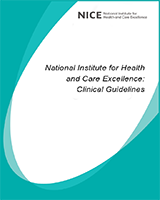From: Evidence review for step 4 treatment

Evidence review for step 4 treatment: Hypertension in adults: diagnosis and management: Evidence review G.
NICE Guideline, No. 136.
National Guideline Centre (UK).
London: National Institute for Health and Care Excellence (NICE); 2019 Aug.
Copyright © NICE 2019.
NCBI Bookshelf. A service of the National Library of Medicine, National Institutes of Health.